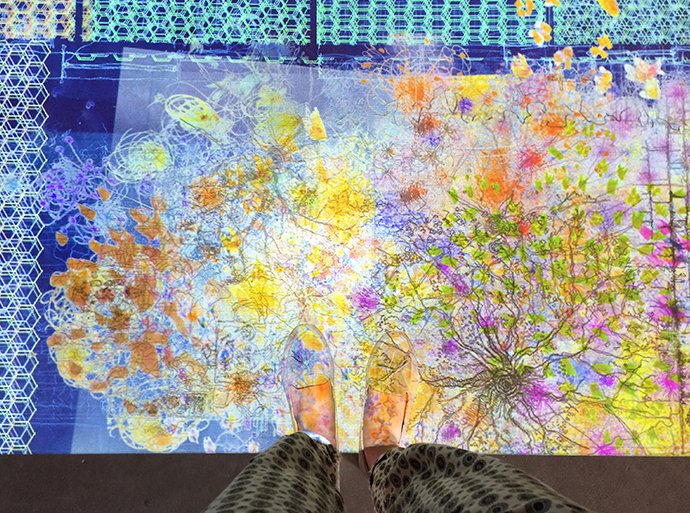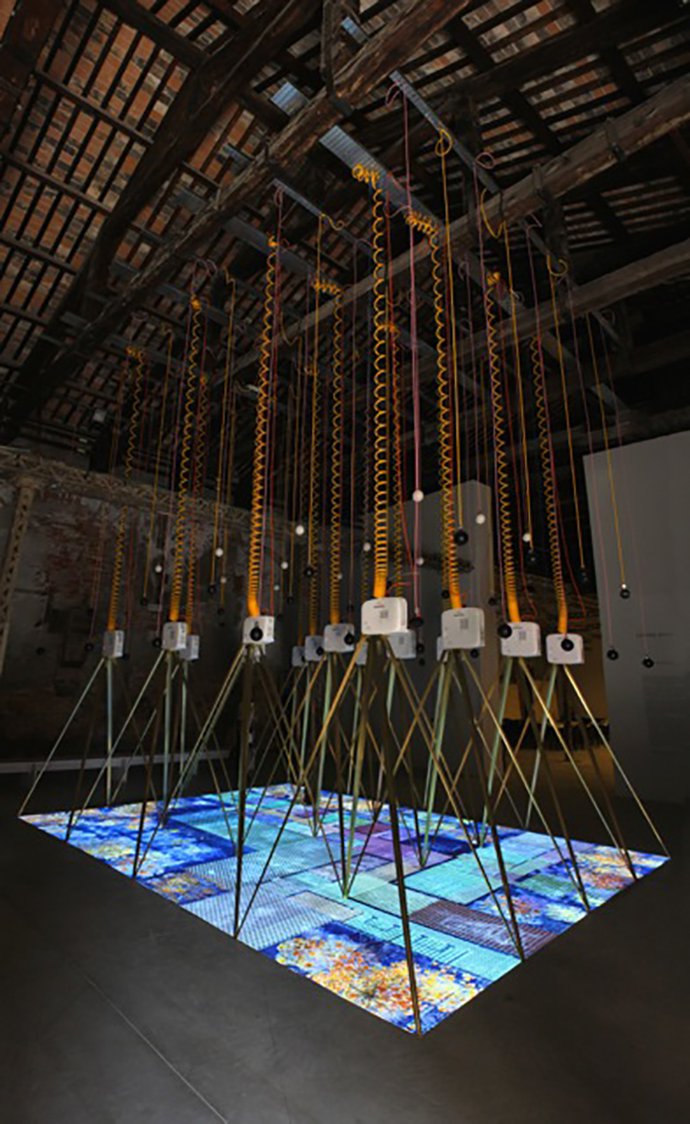An Invigilator's Diary Entry 15

Artur, Liam and I arrived into the afternoon heat on the 28th of May. We dropped our bags at the apartment and went straight to the Irish pavilion in the Arsenale. Working as invigilators, this would be our base for the next two months, until new invigilators took over. The excitement of Níall and his team was apparent. They passionately introduced us to the pavilion and the huge system that controls it. When the architects left Venice, the pavilion was in our care.
The Losing Myself website provided me with all the knowledge I needed before arriving. It was helpful not only for a greater understanding of Alzheimer’s, but to get a feel for the pavilion in Venice. We directed visitors to this website when they sought further information.
My role as an invigilator was to instruct visitors, answer questions, and make sure the pavilion was running smoothly. We split the day into half-day shifts: four hours, from 10am or 2pm. The control system turned itself on and off every day. Through an app on our phones we could control the sound, the video loop and projection grids. The huge system could be controlled and fixed remotely from England by Art AV. There was also a team of tech men in the Arsenale should problems arise.
One recurring task was dissuading visitors, especially children, from walking through the brass legs and under the projectors. There was a risk of knocking the legs and moving the projections out of line. The most memorable part of the soundtrack was the Angelus chiming at 6pm in the video loop. It was obvious when there was an Irish person in the room from their reaction to the familiar sound.

On first entering the Irish pavilion, I was struck by the loud and crisp sounds, which could be heard from the preceding rooms. Inside, sixteen projectors rested on tall brass legs. Coloured and twirling wires hung down, connecting the projectors to the ceiling. Bright and moving drawings of the Alzheimer’s Respite centre were projected on the floor. Several visitors described the installation as otherworldly.
The pavilion was instantly engaging; prompting eyes to dart around the room on entry, and often compelling feet to walk the perimeter as visitors further explored the work. An inquisitive hand or foot would be extended under a projector, confirming the source of light to the viewer. The hanging spherical speakers were a constant intrigue. At times, the environmental sounds playing in the room were mistaken for outdoor rain.
The pavilion resonated with visitors of all ages and nationalities. Many watched the sixteen-minute video loop in full and took time to read the wall text. The majority of questions asked were about the experiential plan and the installation. There were visitors who were surprised the pavilion had not won an award. Praise for the pavilion was abundant.
Visitors who had direct experience with Alzheimer’s through family or friends were, unsurprisingly, the most touched. One gentleman in particular was so moved by the installation he was almost compelled to tears.
Invigilating the Irish pavilion opened my eyes to Alzheimer’s disease and the challenges that people with dementia face. It became clear to me when observing visitors reactions to the pavilion that there is a widespread desire to learn more about Alzheimer’s. I believe the Irish pavilion has succeeded in raising awareness of dementia and asking questions about how architecture can help to improve the lives of people affected by it.
I am extremely glad to have been part of this worthwhile project. Equally, I am grateful to have spent two months in the wonderful city of Venice.
Mia de Las Casas